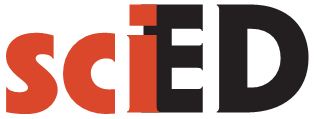Publication Ethics and Publication Malpractice Statement
This document outlines the ethical standards required of all parties involved in the publication process: authors, reviewers, and editors. The Editorial Board is committed to upholding the highest standards of integrity and does not tolerate plagiarism, data fabrication, or any other unethical practices. Manuscripts that fail to meet these standards will not be accepted for publication.
1. Publication and Authorship
The journal strictly prohibits plagiarism and the submission of fraudulent data. All articles must adhere to recognised standards for reporting scientific work. Authors are required to include a complete list of references and acknowledge any financial support received.
Only original research articles will be considered. If any part of a manuscript has been previously published, this must be clearly acknowledged and properly cited (see below for further detail).
2. Authors’ Responsibilities
-
Authors must ensure that their submission is entirely original. Any overlapping or similar content from other works must be clearly cited.
-
All listed authors should have made a significant contribution to the research and writing of the manuscript.
-
The manuscript must not have been previously published, nor be under consideration elsewhere.
-
Authors must accurately cite all sources used in their work, including previously published material and financial support. Permission must be obtained for any reproduced content.
-
Authors must retain accurate records of data related to their manuscript and be prepared to provide access upon reasonable request. All data must be genuine and verifiable.
-
If a significant error is discovered post-publication, authors must promptly notify the editor and cooperate in issuing a correction, addendum, or retraction as appropriate.
-
Authors are expected to participate in the peer review process when invited to do so, especially if the manuscript falls within their area of expertise.
-
If generative AI or AI-assisted technologies are used during the writing process, their role must be limited to improving clarity and language. All AI-generated content must be reviewed and edited by the authors. Full responsibility for the manuscript remains with the authors.
-
Authors must disclose the use of AI tools in their manuscript; this disclosure will be published alongside the article. Transparency helps maintain trust among all stakeholders and ensures compliance with tool usage policies.
-
Authors are responsible for ensuring the originality of their work, proper attribution of authorship, and that the content does not infringe on the rights of third parties.
-
Any potential conflicts of interest must be declared to the Editorial Board (see Section 5).
3. Peer Review and Reviewers’ Responsibilities
-
Reviewers contribute to editorial decision-making and assist in improving the quality of manuscripts through objective, constructive, and timely reviews.
-
They must maintain confidentiality regarding all aspects of the manuscript and must not retain or share any part of it.
-
Reviewers should identify relevant uncited work and notify the editor of any similarities with previously published or submitted content.
-
Any potential conflicts of interest (financial, institutional, personal, or professional) must be declared. If necessary, reviewers should recuse themselves from the review process.
4. Editorial Responsibilities
-
Editors must ensure that the peer review process is fair, unbiased, and timely, with all submissions evaluated solely on academic merit.
-
Editors must act objectively, without discrimination based on authors’ gender, sexual orientation, religious or political beliefs, ethnicity, or geographical location.
-
Editors should not handle manuscripts in which they have a conflict of interest (see Section 5).
-
Editorial decisions must be based on the article's importance, originality, clarity, validity, and relevance to the journal’s scope.
-
Editors must maintain the confidentiality of submissions and preserve reviewer anonymity.
-
Editors must adopt and follow transparent procedures for handling complaints and ethical concerns, ensuring that authors are given the opportunity to respond. All complaints should be documented and investigated, regardless of when the publication occurred.
-
Editors must issue corrections, retractions, or apologies where necessary.
5. Conflicts of Interest and Disclosure
-
Editors must avoid conflicts of interest related to manuscripts under their consideration. These may arise from competitive, collaborative, or personal relationships.
-
Any potential editorial conflicts must be disclosed to the publisher.
-
Editors must not be involved in decisions regarding manuscripts they have authored or co-authored, or those involving close colleagues or related interests.
-
Authors must disclose any financial or personal relationships that could unduly influence their work. Examples include employment, consultancies, stock ownership, grants, patents, and paid expert testimony.
-
All sources of funding for the research must be acknowledged in the manuscript.
6. Publishing Ethics and Misconduct
-
The Editorial Board is committed to upholding high standards of academic integrity. Measures are taken to prevent and address plagiarism and data falsification.
-
The journal prioritises ethical and scholarly standards over commercial interests.
-
Corrections, clarifications, retractions, or apologies will be issued as needed to maintain the integrity of the scholarly record.
-
Research involving human or animal subjects must comply with relevant laws and institutional guidelines. Manuscripts must include statements on ethics approval and informed consent, where applicable.
Addressing Unethical Behaviour
Misconduct or unethical behaviour may be reported at any time by any party. Sufficient evidence must be provided to initiate an investigation. All allegations will be taken seriously and handled consistently.
Possible outcomes (in increasing order of severity):
-
Education or advice to the author/reviewer regarding best practices.
-
A formal warning regarding unacceptable conduct.
-
Publication of a notice outlining the misconduct.
-
Editorial commentary on the issue.
-
Notification of the author’s or reviewer’s institution or funding body.
-
Retraction of the article and notification to indexing services and readers.
-
Temporary or permanent ban on future submissions.
-
Referral to professional bodies or higher authorities for further investigation.
Sources
This policy is informed by the COPE Code of Conduct and Best Practice Guidelines for Journal Editors (Committee on Publication Ethics).
